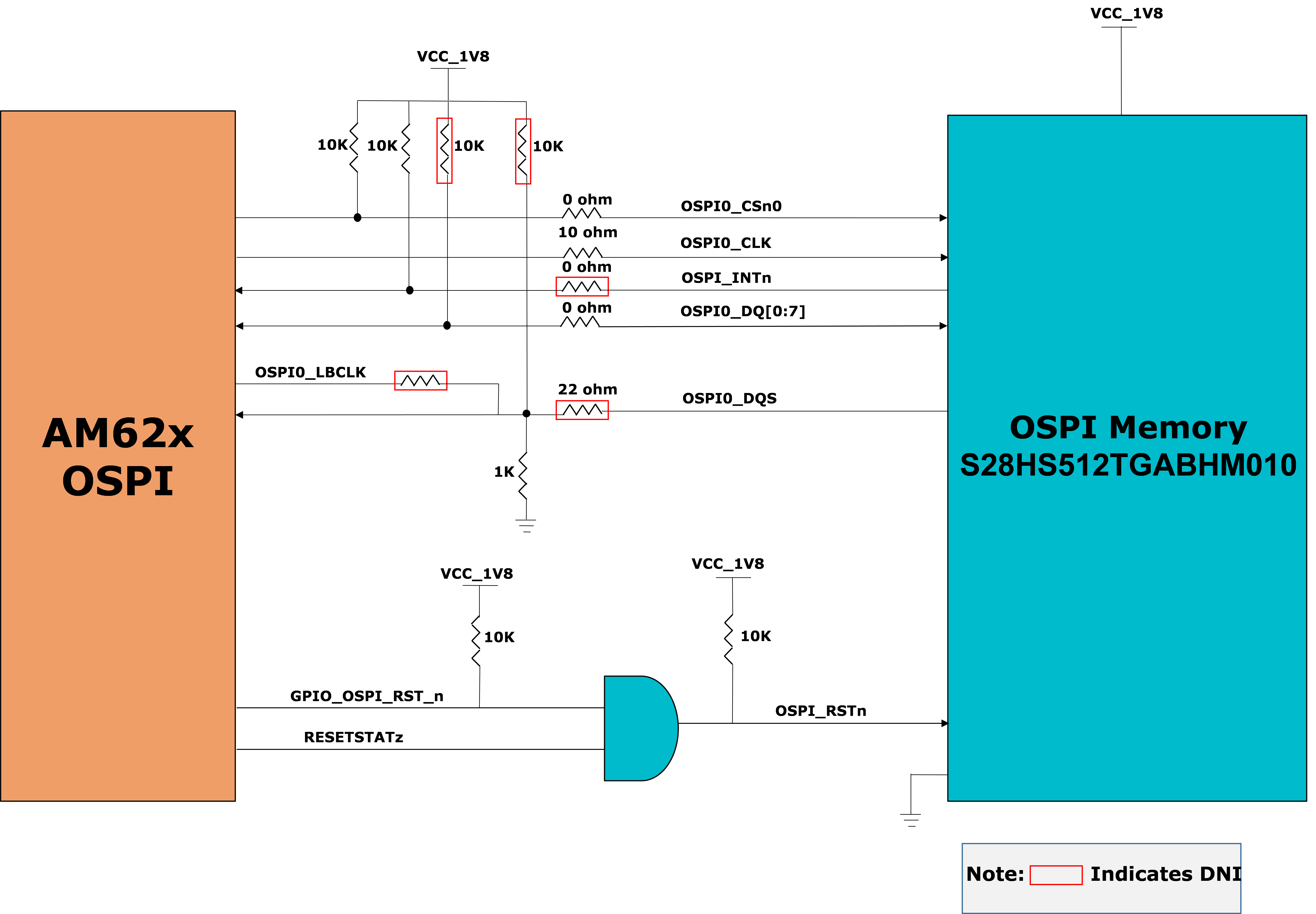SPRUJ40C may 2022 – may 2023
- 1
- Abstract
- Trademarks
- 1EVM Revisions and Assembly Variants
-
2System Description
- 2.1 Key Features
- 2.2 Functional Block Diagram (SK-AM62 and SK-AM62B)
- 2.3 Functional Block Diagram (SK-AM62-P1 and SK-AM62B-P1)
- 2.4 AM62x SKEVM Interface Mapping
- 2.5 Power ON/OFF Procedures
- 2.6
Peripheral and Major Component
Description
- 2.6.1 Clocking
- 2.6.2 Reset
- 2.6.3 OLDI Display Interface
- 2.6.4 CSI Interface
- 2.6.5 Audio Codec Interface
- 2.6.6 HDMI Display Interface
- 2.6.7 JTAG Interface
- 2.6.8 Test Automation Header
- 2.6.9 UART Interface
- 2.6.10 USB Interface
- 2.6.11 Memory Interfaces
- 2.6.12 Ethernet Interface
- 2.6.13 GPIO Port Expander
- 2.6.14 GPIO Mapping
- 2.6.15 Power
- 2.6.16 AM62x SKEVM User Setup/Configuration
- 2.6.17 Expansion Headers
- 2.6.18 Interrupt
- 2.6.19 I2C Address Mapping
-
3Known Issues and Modifications
- 3.1 Issue 1 - HDMI/DSS Incorrect Colors on E1
- 3.2 Issue 2 - J9 and J10 Header Alignment on E1
- 3.3 Issue 3 - USB Boot descoped on E1
- 3.4 Issue 4 - OLDI Connector Orientation and Pinout
- 3.5 Issue 5 - Bluetooth descoped on E2 EVMs
- 3.6 Issue 6 - Ethernet PHY CLK Skew Default Strapping Changes
- 3.7 Issue 7 - TEST_POWERDOWN changes
- 3.8 Issue 8 - MMC1_SDCD spurious interrupts
- 3.9 Issue 9 - PD Controller I2C2 IRQ Not Pinned Out
- 3.10 Issue 10 - INA Current Monitor Adress Changes
- 3.11 Issue 11 - Test Automation I2C Buffer Changes
- Regulatory Compliance
- Revision History
2.6.11.2 OSPI Interface
AM62x SKEVM board has a 512-Mbit OSPI memory device from Cypress Part# S28HS512TGABHM010 which is connected to the OSPI0 interface of the AM62x SoC. The OSPI interface supports single and double data rates with memory speeds up to 200 MBps SDR and 400 MBps DDR (200 MHz clock speed).
OSPI & QSPI implementation: 0 ohm resistors are provided for DATA[7:0], DQS, INT# and CLK signals. Footprints to mount external pull up resistors are provided on DATA[7:0] to prevent bus floating. The footprint for the OSPI memory also allows the installation of either a QSPI memory or an OSPI memory. The 0 ohm series resistors provided for pins OSPI_DATA[4:7] will be removed if QSPI flash is to be mounted.
Reset: The reset for the OSPI flash is connected to a circuit that ANDs the RESETSTATz from the AM62x with the signal GPIO_OSPI_RSTn from the SoC GPIO. This will apply reset for warm and cold reset. A pull-up is provided on GPIO_OSPI_RSTn coming from SoC pin to set the default active state.
Power: The OSPI flash is powered by 1.8 V IO supply. The 1.8 V supply is provided to both VCC and VCCQ pins of the OSPI flash memory.
The OSPI interface of the SoC is powered by VDDSHV1 Power group of SoC and is connected to 1.8V IO supply.
